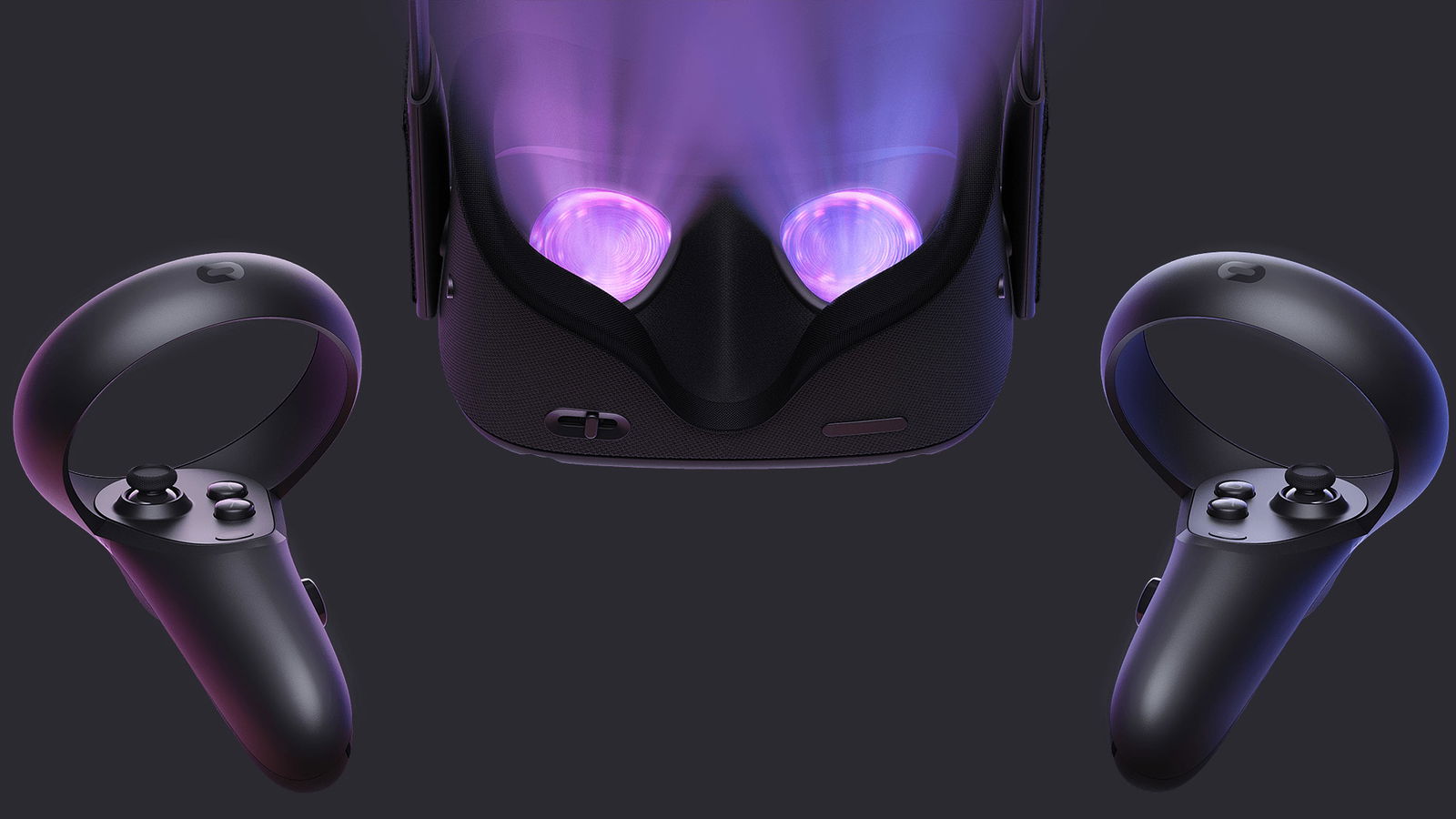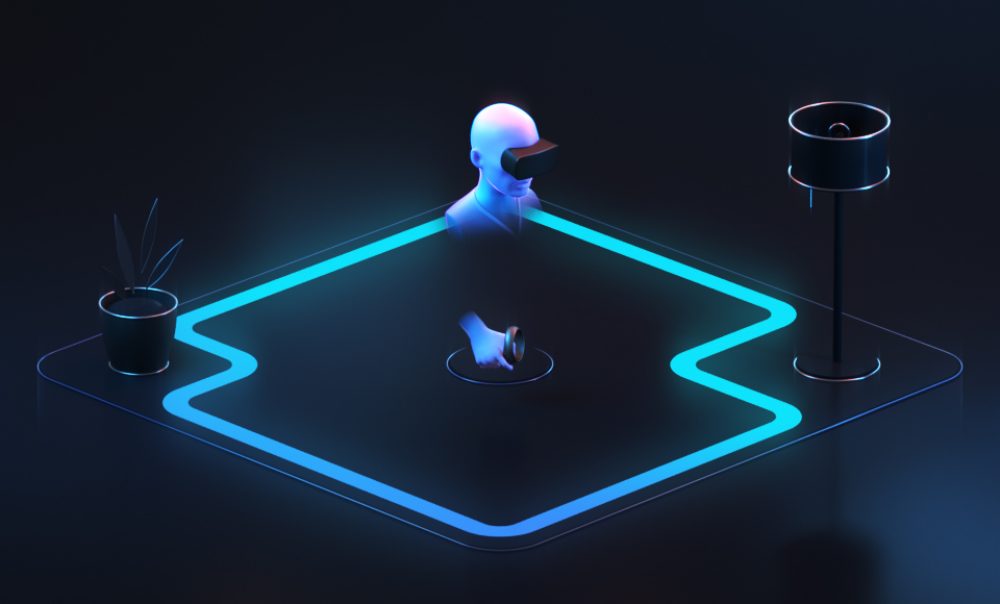I love VR. I’ve had my trusty Oculus Rift CV1 since its launch back in 2016 and I’ve tried just about everything VR has to offer. While I was excited for the Oculus Quest, Oculus’s all-in-one wireless VR headset, I viewed it as a companion piece to my CV1. I thought I would never experience the honeymoon phase I first went through when I originally got an Oculus Rift again. The Oculus Quest proved me wrong.
Product Name: Oculus Quest
Manufacturer: Oculus
Price: $399 (64GB), $499 (128GB)
Release Date: May 21, 2019

The Oculus Quest is magical. Every time I put the headset on I’m dumbfounded as to how something like this is even possible. It’s the full premium PCVR experience contained in a standalone device. No PC, no wires, no limits.
The primary concern most people have with VR (other than price) is ease of use. Other VR headsets require a myriad of wires and passthrough boxes to use, and that turns even me off from using my Oculus Rift or PlayStation VR as much as I’d like to. Setup is a pain, but that problem is alleviated entirely with the Oculus Quest. With the Quest, I can be playing Beat Saber within seconds. Everything about the Quest is designed in such a way as to remove all the boundaries between the player and the games, and that has made me fall all the more in love with the device.
The initial setup process is a breeze. After fiddling with the Oculus app on a smartphone for a few minutes, you’re all set. In the headset, you’ll set up your guardian, a virtual cage that prevents you from hitting things while in VR, and then you’re set loose to play whatever you want after a brief tutorial. The guardian setup is especially simple when compared to its PC counterpart; you just draw it on the floor by pointing with one of the controllers and that’s all there is to it. You don’t even have to remove the device thanks to its passthrough cameras. You can even opt for a stationary guardian that doesn’t require any configuration if you’d like to wear the headset in bed or on the couch. The only complaint I have with the guardian is that it’s a little too sensitive, popping up when I’m nowhere near the edge of my playspace, which broke my immersion every now and then.
Tech-wise, the Quest is packing some pretty neat stuff behind those lenses. There’s a 72Hz OLED display running at a resolution of 2800×1600 (1440×1600 per eye) powered by a Snapdragon 835 processor. The lenses themselves are an upgrade over the Rift’s, reducing the infamous screen door effect and minimizing god rays from bright scenes. It’s definitely underpowered when compared to the newly released Rift S, but that’s to be expected considering the Rift is powered by a powerful PC. For a standalone unit, the Quest boasts some pretty impressive hardware. Unfortunately, I found the Oculus Quest built-in speakers lacking, as they’re built into the head strap instead of headphones. However, there are headphone jacks on both sides of the device if you want a better audio experience.
The tracking is even more impressive. Unlike the Oculus Rift CV1, HTC Vive, and PlayStation VR, the Oculus Quest (and the Rift S) utilizes inside-out tracking, eliminating the need for extra cameras entirely. The cameras (of which the Quest has 4) are located on the headset itself and track your position and your controllers in relation to the room you’re in. There are a few drawbacks to this tracking solution, however. If the cameras lose sight of your controllers, your hands won’t be tracked. In my time with the Quest, though, I rarely lost tracking. You can’t put your hands behind your back, obviously, but the Quest’s tracking held up in even the most intense Beat Saber sessions. You also can’t play in the dark, otherwise, the headset won’t be able to track anything. It’s pretty much a non-issue, as needing a light source is a welcome tradeoff for fully wireless VR. Just flip a light switch and you’re good to go!
Being wireless, the Quest needs to power itself. Battery life is nothing special, but it never got in the way of me playing anything. You can expect around three hours of hardcore games like Superhot or Beat Saber before needing to recharge using the headset’s included USB-C cable. The Touch controllers take one AA battery each, but these last much, much longer than the headset.
While three hours might seem relatively short, it’s a fine length for VR. Three hours of Beat Saber or Dead and Buried 2 are usually enough to tire anyone out, and I’m almost always done before the headset is out of battery. For those of you who want marathon gaming sessions with the Quest, you can play it while it’s plugged in, which limits your range of motion, but it’s worth it for those long Netflix binges.
Even though I rarely hit the three-hour mark playing intense games like Creed, I have worn the headset a lot longer than I usually wear my Rift and that’s thanks to the Quest’s comfort factor. It’s a lot lighter than I expected a standalone VR set to be (even though it’s still heavier than the Rift), and the lack of wires was freeing after years with a Rift. The face cover is softer than the Rift’s too, which helped with extended VR sessions. A completely wireless VR device also allows for configurations that weren’t possible with a headset tethered to a PC, like watching Netflix on a giant virtual screen or watching 360-degree YouTube videos in the comfort of my bed.
Because the Quest is wireless, it’s a lot easier to show off to friends and family than the Rift or PSVR. The Quest has built-in casting functionality to the Oculus app or Chromecasts, so you’ll be able to show off your gameplay on a second screen just about anywhere. The Quest also supports screenshots and video recording, as well as streaming directly to Facebook. Unfortunately, some games don’t support casting (Beat Saber being one of them although the devs have confirmed they’re fixing this), but these games are a select few and the vast majority of Quest titles are compatible with casting.
The Quest’s game library is like the greatest hits of VR. Boasting an impressive 50 launch titles with many more games planned for this year, I found no shortage of experiences on Quest. Fan favorites like Beat Saber, Moss, Superhot, and even Robo Recall are available on Quest right now, and brand new experiences like Dead and Buried 2 and Vader Immortal are fantastic showpieces for what the Quest can do.
Beat Saber is incredible as one would expect. Moss is the same charming game that it was on PSVR, but with an entirely new chapter exclusively available on Quest for now. Superhot is a different experience without wires, allowing for dodges and weaves that would put Neo to shame. Robo Recall blew me away with the level of parity it achieves with the Rift version. Seriously, the team over at Epic Games is comprised entirely of technical wizards. Dead and Buried 2 is a huge leap forward over the original Oculus Touch launch title, featuring a new deathmatch mode reminiscent of Quake. Vader Immortal is easily the Quest’s killer app, and it floored me with its presentation and quality (check out my full review here).
There are a handful of non-game experiences on the Quest store, and they’re all just as impressive as the games. Netflix is a joy to use on the Quest, letting you watch your favorite shows and movies in a cabin with a huge screen. The lights even dim when the show starts, which is a nice touch. YouTube is present too, and you can watch both standard and 360-degree videos in VR. Wander uses Google Streetview to let you travel the world from the comfort of your home. It even features little history tidbits about landmarks and significant locations, as well as a calendar feature that lets you view places as they were in the past. Seeing how Times Square changed over the past decade was one of my favorite experiences with the Quest so far.
Oculus TV is where you’ll find most video apps. It’s a separate section from your library and features a huge 2D screen in a generic (albeit beautiful) environment. Here you’ll find apps like ESPN and FOX NOW, and you can even watch live TV with Pluto TV (a free service) or Sling (with a subscription). There aren’t too many apps available for Oculus TV right now, but more are sure to come in the future.
That’s the primary problem with a standalone VR device like the Quest. You’re limited to what’s available on the Quest store. This isn’t inherently a bad thing, it’s just that you’re missing out on the games already available on platforms like Steam. You can’t mod Quest games as of yet either, which is kind of a bummer because mods helped to extend my playtime on games like Beat Saber when I played on PC. The Quest is definitely a VR console instead of a PC peripheral, and it struggles with the same issues consoles face in their first months, although to a much lesser extent. There are still 50+ games and experiences available, so it’s not like there isn’t anything to play or anything.
That’s not to say there isn’t any way to get things onto the Quest from other sources. Sideloading is a route you can take to get unofficial apps and games on your Quest, and that’ll be the route mods end up taking when they become available too. Fan favorite shooter Pavlov is in alpha for the quest right now, and everyone playing that had to sideload it. There are even apps you can sideload that let you stream SteamVR games to your Quest, although these are still very, very early and don’t work too well.
It’s the promise of future content that gets me excited about the Quest. Pavlov‘s alpha development has been progressing at a pace that has blown me and the rest of the community away, and the same goes for streaming apps like ALVR. Ninja action game Sairento is coming to Quest next month. These are all things that people were skeptical about on the Quest, and they’re being developed quicker than anyone would’ve thought. Developers are very eager and excited to work with the Quest, and fans are equally as excited about experiencing these titles when they release. If they got Robo Recall running on the Quest, they can get pretty much anything running on the Quest.
Still, some upcoming Oculus exclusives are Rift only, but these are huge, big budget titles like Stormland and Asgard’s Wrath. I think it’s safe to say that the majority of VR titles released from here on out will eventually find their way onto the Quest, save for those giant open-world adventures or graphical showcases.
Despite its very minor problems, the Oculus Quests wows me every time I put the headset on. The overall ease of use makes VR much more appealing, and the ability to jump in and play a quick round of whatever I’ve been playing has not been a thing until now. With the Rift, I’d just put it on whenever something interesting came out, but with the Quest, I’m buying games just to have an excuse to put the thing on. Taking it off and seeing nothing connected to it still hasn’t ceased to amaze me. The Oculus Quest has blown me away every time I enter the VR space.
Until now, VR has been a niche market. Its endless wires and cameras, as well as the lack of games, drove audiences away. Now, with the release of the Oculus Quest and the Rift S, VR is finally here. It’s no longer just for the PC enthusiasts. It’s no longer just for a small subset of PlayStation 4 users. VR is finally here for the masses, and the Oculus Quest is an incredible first step in cementing VR as a part of the mainstream. Quest is the future, and the future is now.
Oculus Quest
Summary
The Oculus Quest offers a VR experience that sacrifices graphical fidelity, sound, and other technical aspects in exchange for a fully wireless VR solution. The tradeoffs are completely worth it in the end, as the Quest provides an experience almost on par with the Rift for most titles, and any drawbacks are completely overshadowed by the freedom of wireless VR. This is VR for the masses and the future of VR.
Pros
- Incredibly Easy to Use
- Quick Setup
- Wide Array of Quality Titles
- Sideloading Capabilities
- Wireless
Cons
- Oversensitive Guardian
- Subpar Integrated Sound





